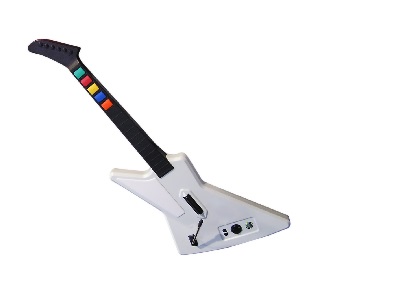How to Fix Guitar Neck Bowing Problems
 Some of us never think twice about our guitar necks. They’re attached to the body, they have a fretboard on top (typically made of rosewood) and they are either thick or thin, short or long. Most of us never give our guitar necks a second thought past that initial batch.
Some of us never think twice about our guitar necks. They’re attached to the body, they have a fretboard on top (typically made of rosewood) and they are either thick or thin, short or long. Most of us never give our guitar necks a second thought past that initial batch.
Some of us start to notice that our notes are buzzing a bit and get curious. Then we look down the neck and discover that it is bowed.
Guitarists don’t seem to realize that when you change string gauges or tuning, the amount of pressure on your neck changes. Your neck is a long piece of wood. Too much pressure on a long piece of wood can cause it to bend.
When you change string gauges or tuning, you should always check your neck, and make adjustments to your truss rod when necessary.
So, What is a Truss Rod?
A truss rod is a rod that is in the neck of your guitar. What’s more, it can be tightened or loosened, depending on the need, to adjust the relief of your neck. Loosening to the truss rod pushes the rod towards the body and the strings, adding a slight bend. Tightening the truss rod moves it further from the body, straightening the neck.
Now, it is pretty obvious how the truss rod can help you with neck bowing, but how do you know what you need?
Issues With Neck Warpage is Often Linked to the Truss Rod
Before we explain this, we need to talk about how to access the truss rod. On most guitars, the truss rod is covered by something known as the truss rod cover. This is a little piece of plastic on your guitar’s headstock underneath the strings. For other guitars, the truss rod is actually at the bottom of the neck just before the body.
To find out what you need, hold your guitar at an angle, roughly forty-five degrees from your body, and look down the neck. If the middle of your neck is dipping, you need to loosen the truss rod to relieve that dip. If the middle of your neck is bulging, you will need to tighten your rod to straighten the rest of the neck.
Step by Step Guide to Adjusting And Tuning
The only way to safely adjust the truss rod is by turning it in small increments. Never tighten or loosen more than a quarter turn at any time, as small amounts do a lot, and an extreme amount can damage your neck.
Be sure that while you are adjusting, you are constantly reevaluating the contour of the neck to avoid overcompensating and bowing the neck in the opposite direction. This may lead to bigger guitar neck bowing problems if not done right. Once you have the neck adjusted properly, double-check to be sure that your neck is straight.
If you find yourself a bit overwhelmed by the idea of adjusting your guitar’s neck, you may want to consider bringing your guitar to a guitar repair technician. Confidence is key when doing any work on any instrument, and a nerve-shaken hand isn’t going to do you any good, so be sure you are up to the task before diving in. Good luck!
Everything You Need to Become a Great Guitar Player…
For the most comprehensive step-by-step guitar training program, we highly recommend Gibon’s Learn & Master Guitar course. This award winning DVD course is currently having a 3-day sale and you get to save $100 off the usual price today!
Click here to find out more information and get the course before this promotion ends…
Related Articles
Leave A Comment







One Comment
Hi there,
I have just read your ‘How to Fix Guitar Neck Bowing Problems’ article.
Having inherited my late father in laws, late 70s early 80s Yamaha acoustic guitar, I loved the guitar but never took to playing it too much as the action always felt really high compared to my other guitars. Having had a look at the neck it appeared to be bowing up hence the high action.
After reading your guide I have just made my first ever truss rod adjustment and it is now straight enough and plays like a completely different guitar!!!!
I am totally blown away and would just like to say thanks for the article.
The small things in life matter most!
Thanks
Danny.